Clematis is probably one of the most popular types of plants to grow out there. Given just how many there are to find in the world, that’s hardly a surprise!
There are hundreds of different types of Clematises available today, and their beauty and uniqueness make them easy to choose as your favorite garden plant.
To help you find the perfect clematis for your garden, we have compiled this list of some of the most iconic specimens for you to pick from!
1. Italian Leather Clematis
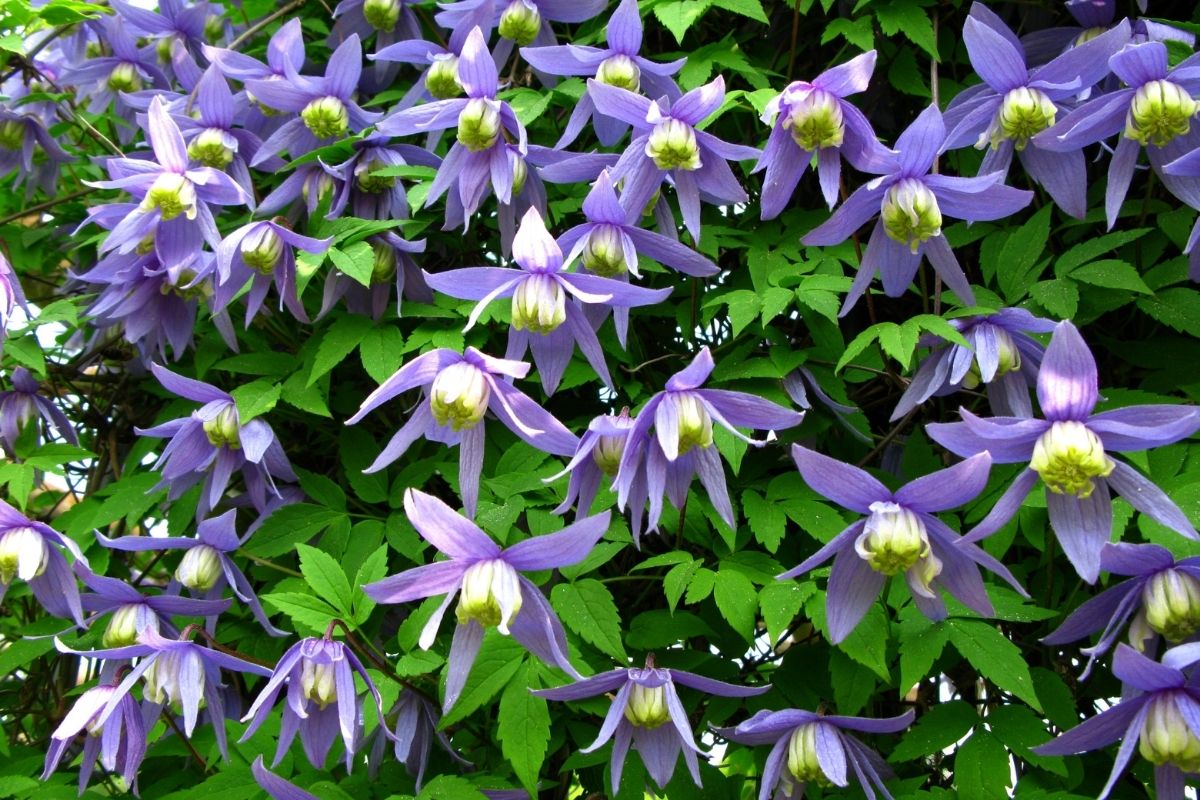
To start our list of just some of the many species of clematis out there, we have the Italian Leather clematis
Also known as the Prince Charles variety of clematis, Italian leather is considered an early maturing variety of clematis.
This means that it blooms earlier than other varieties, often well before the average growing season begins.
The flowers are usually pinkish red, although occasionally white ones can appear. These flowers are generally large, and they are arranged in clusters that hang down from the vine.
They are extremely fragrant, and their scent can linger into the fall.
The leaves of the Italian leather’s clematis are similar to those of other varieties, although slightly smaller.
The foliage grows in a dense clump, and it can grow up to 2 feet tall. The leaf color varies depending on the variety of clematis, but it typically comes in shades of green, gray, pale yellow, or various combinations thereof.
This variety is one of the most common types of clematises used in gardening. It is relatively easy to care for, requiring little attention once established.
This variety does not need to be pruned regularly, and it is capable of growing to heights of 15 feet or more when there is enough material for the plant to climb up.
For this reason, it is ideal for use in areas where space is limited.
2. Polish Spirit
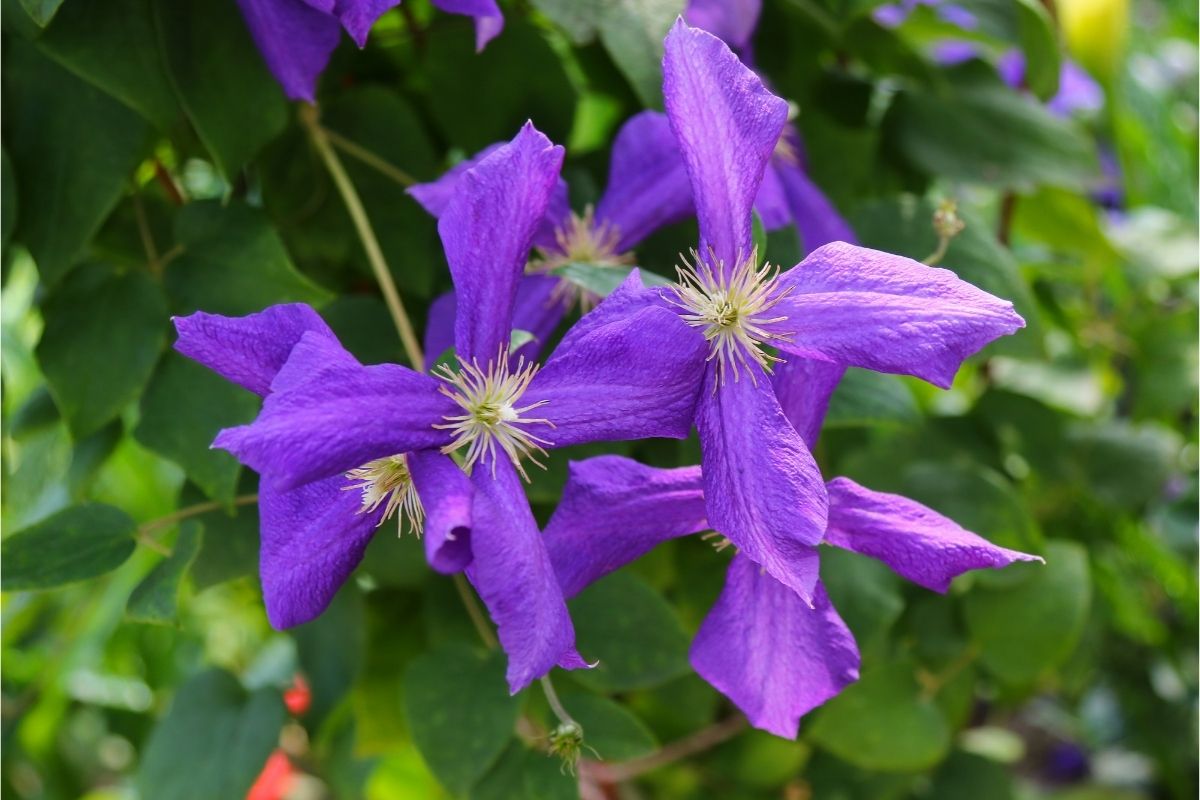
The polish spirit variety of clematis is known for a couple of features, the main ones that are noticeable to most garden lovers being its large, oval-shaped petals and their ability to climb pretty much anything to get as much sunlight as possible
Clematis are relatively pest-free. However, they can sometimes attract aphids. These pests feed on the leaves, causing them to turn brown.
Although clematis can be grown indoors, they are better suited to outdoor environments, as is the case with the polish spirit variety. They prefer to grow in areas where they can get plenty of sunshine.
Clematis do not like being transplanted. They prefer to stay in their original location. If you want to move them, then transplant them into larger pots before moving them outdoors.
Clematis can grow in areas that receive regular rainfall. Some people say that clematis thrives in wet conditions.
Clematis roots can survive in standing water. As long as the soil is damp, the roots will remain alive.
3. Abundance
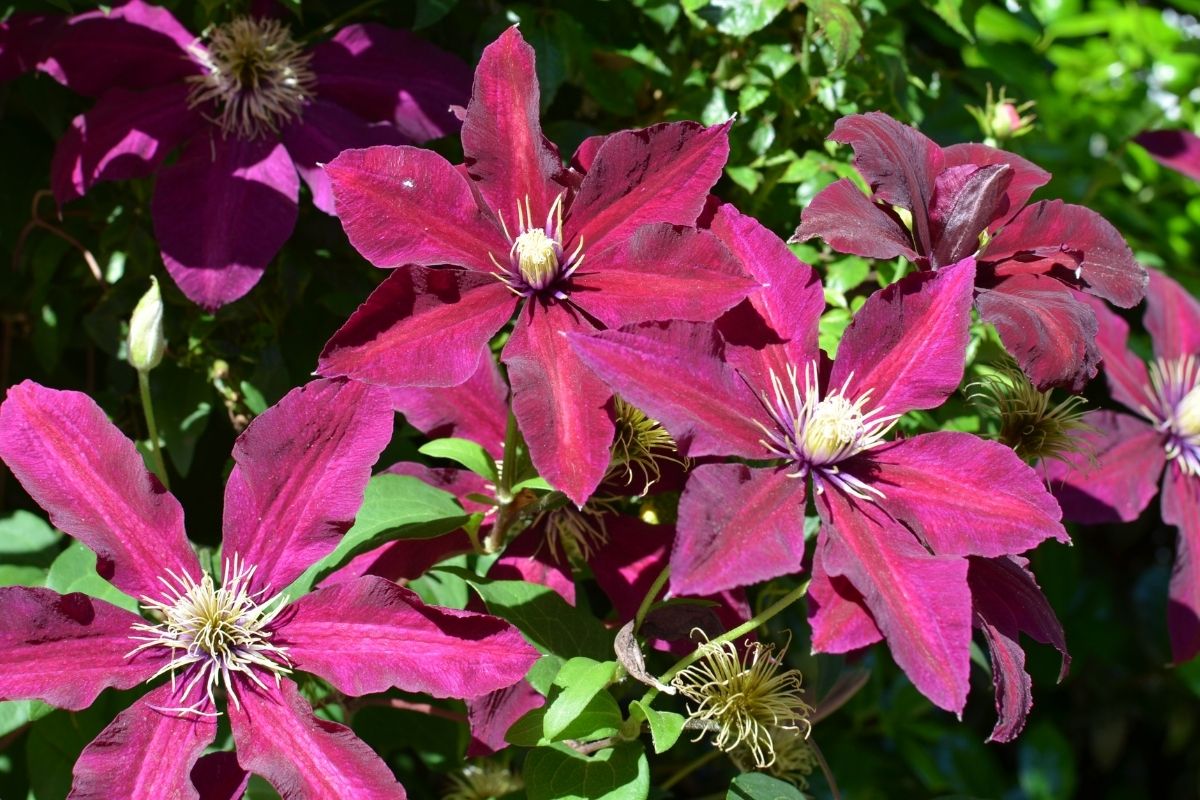
A popular variety of this plant for gardeners around the world, the abundance clematis produces more pointed petals than other varieties and tends to be more pink or light red.
A large, showy, climbing vine that produces masses of red to pink flowers in midsummer, it’s an excellent choice for a sunny location where it can climb up a trellis or fence.
It forms dense clumps of stems that arch over and cover fences.
This type of clematis is also grown as a hanging vine. It requires support when planted due to its heavy blooms. The blooming period lasts about 2 months. These plants grow tall and wide.
4. Freda

Freda is a common, old-fashioned climbing variety that produces large, pink flowers. It grows up to 15 feet tall.
It thrives in full sun and well-drained soil. This variety has an average lifespan of 10 years, although high levels of care and nourishment can help them last twice as long in some cases.
For the most part, however, Freda requires very little care, but it does need regular watering in dry weather. Prune back every spring after flowering.
In general, the flowers bloom earlier in the year, being part of what is known as the ‘first’ group of clematis.
Most varieties produce flowers that grow in clusters, unlike some varieties where flowers are grown as singular specimens.
This clematis is often used as a ground cover or climber. They are commonly grown as ornamentals and feature beautiful blooms.
Unlike many other varieties of the flowering plant out there, the Freda clematis is quite resistant to the fungal infection known as ‘clematis wilt’, which tends to affect the stem of the plant around the soil.
5. Rubens
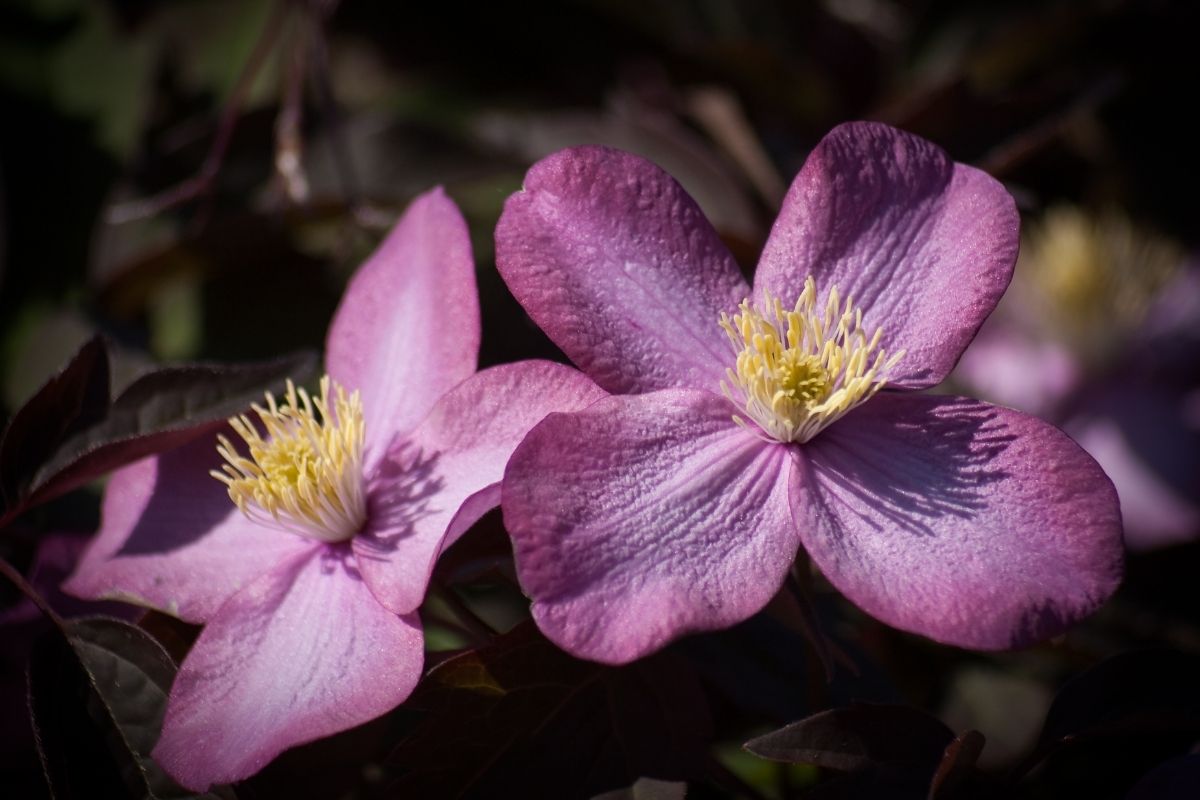
Rubens varieties are one of the most popular types of clematises. They’re easy to grow and produce lots of blooms.
They come in many colors and sizes, ranging from small plants to trees. Rubens varieties typically grow anywhere from 10 feet to 15 feet tall. Some are smaller than average, but many are taller than average.
Most Rubens varieties spread outwards in a wide circle, with no gaps between each plant. This makes it easier to control weeds, fertilize, and tend the plants. It also means there won’t be any gaps in the bloom display.
Rubens varieties usually take the form of vines or climbing shrubs. Their flowers hang down below the leaves, rather than growing up above them.
This gives the plants a bushy appearance and adds height without taking up too much space.
Rubens varieties often come in several colors. The most common color is pink, but red, white, and purple are also available. Many of these colors appear on the same plant, so they can be mixed.
6. Mayleen

Mayleens are different from other types of clematises. They’re hardy climbers that need plenty of sunlight to thrive, and they grow up trees, walls, poles, or trellises.
Mayleens also enjoy a little bit of shade, so they’re perfect for people who live in apartments or condos.
If you want to try growing one in your garden, we recommend planting it near a sunny window. You must provide enough space for the vine to spread out since the roots don’t spread very far.
When selecting your mayleen, it’s smart to choose one that has a compact growth habit. Compact mayleens tend to stay smaller and produce fewer flowers.
Plants with this trait can be kept under control much easier.
Since mayleens aren’t as vigorous as some other types of Clematises, you should give them extra attention during the first year or two to ensure that they establish themselves properly.
The mayleen variety of Clematis is an annual vine with small yellow flowers. It grows quickly, reaching 10 feet tall in one season.
This variety can be planted from seed or cuttings in late fall and early spring. In warmer areas, you can leave the mayleen outside over winter.
In colder regions, you’ll need to bring it inside for the winter. Once you’ve brought the plant inside, you may need to re-pot it every few months.
7. Apple Blossom
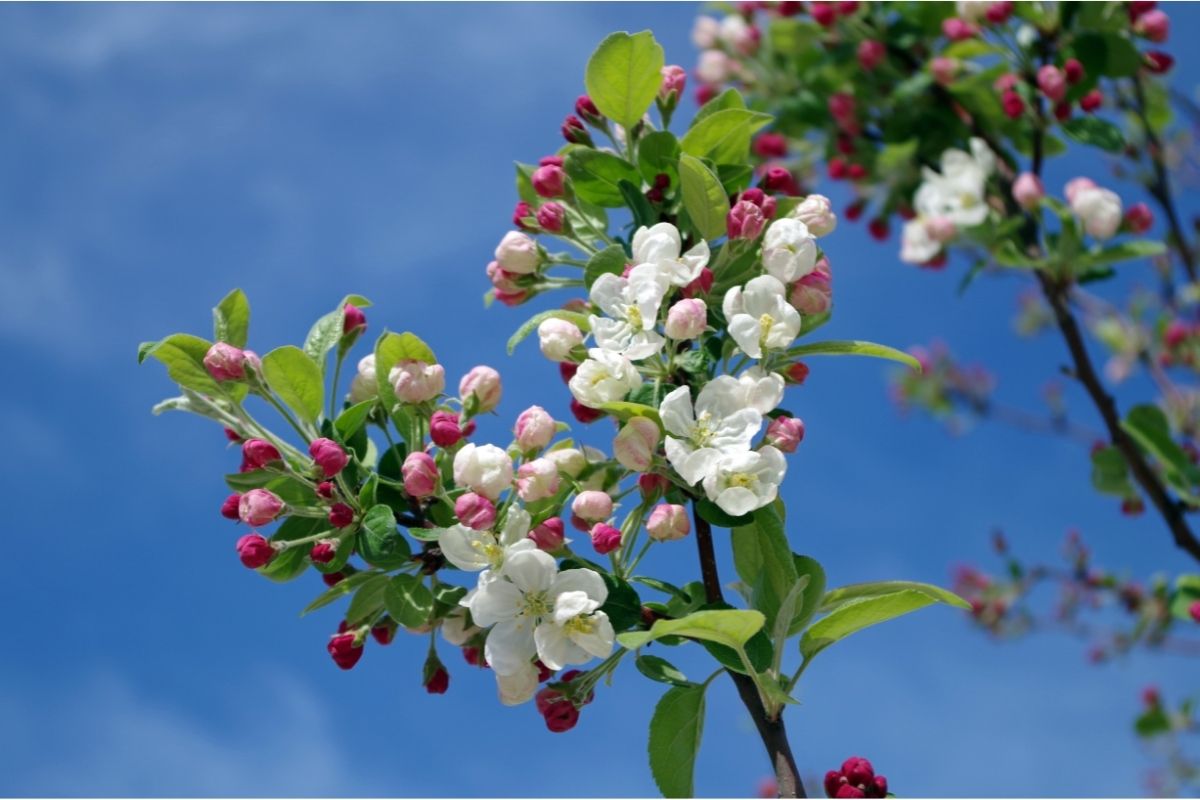
Apple Blossoms are another unique example of how varied this group of flower species is.
This variety is an evergreen species, and the flowers that they produce are often very fragrant, vanilla-smelling flowers that come in light pink petals that are more elongated than other clematis species.
Apple blossoms need full sun, preferably six hours of direct sunlight daily. They prefer moist soil but do not like standing water.
They tolerate moderate drought conditions, although this isn’t ideal for a long time.
Apple blossoms should be cut back after flowering to promote branching growth. If they begin to droop, they can be tied up to encourage stronger stems. Apple blossoms are propagated using seeds.
Seeds germinate readily in warm weather if planted immediately following harvest. Seedlings take about three weeks to reach transplant size.
8. Macropetala
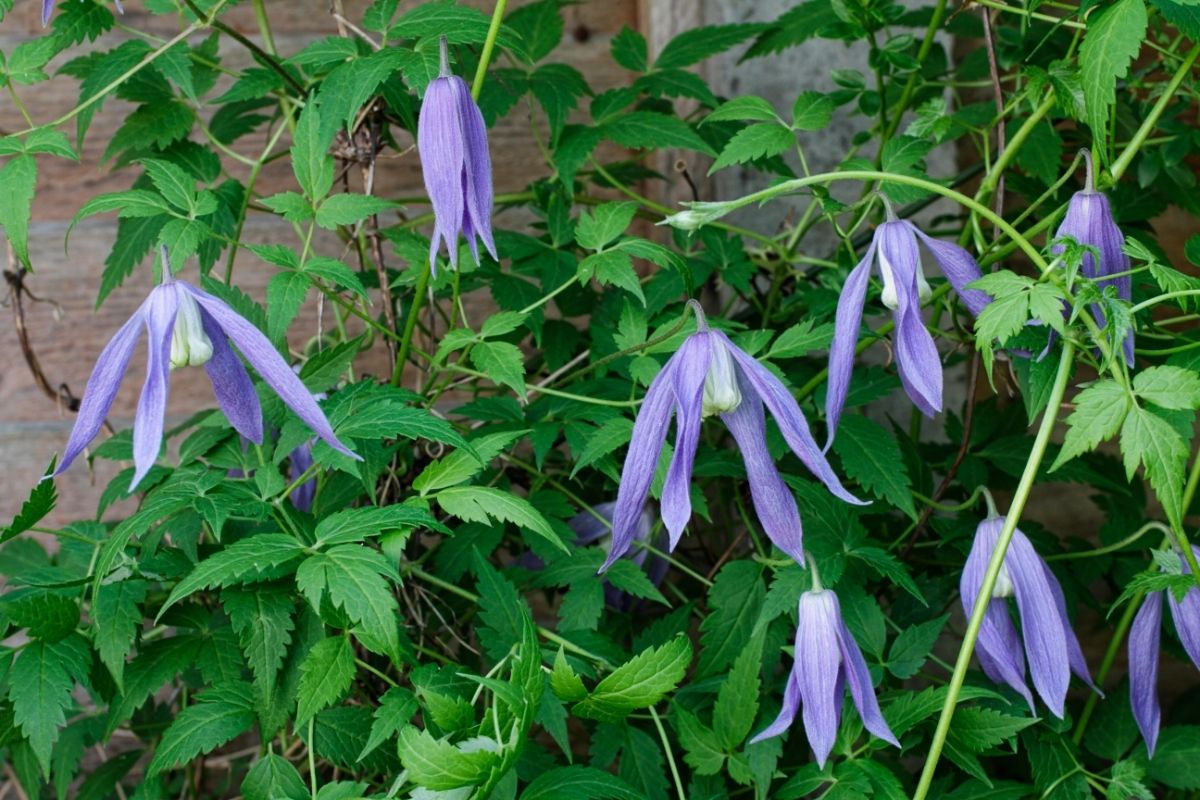
Clematis macropetala is a hybrid variety of clematis grown for its large petals, which are typically larger than those of most types of clematises.
The flower color varies between white, yellow, orange, red, pink, purple, and combinations of these colors. It is a perennial vine that grows up to 3 meters tall in temperate climates.
It is one of the most popular varieties of clematis sold in North America, where it has gained popularity because of its attractive flowers.
Macropetalas usually bloom earlier than other clematis types, typically starting in late April. They continue blooming into June, with some plants flowering through September.
They grow well in full sun and partial shade, although they do need good drainage. Furthermore, they thrive in average soil conditions, though they do tolerate dry soils.
9. Blue Dancer
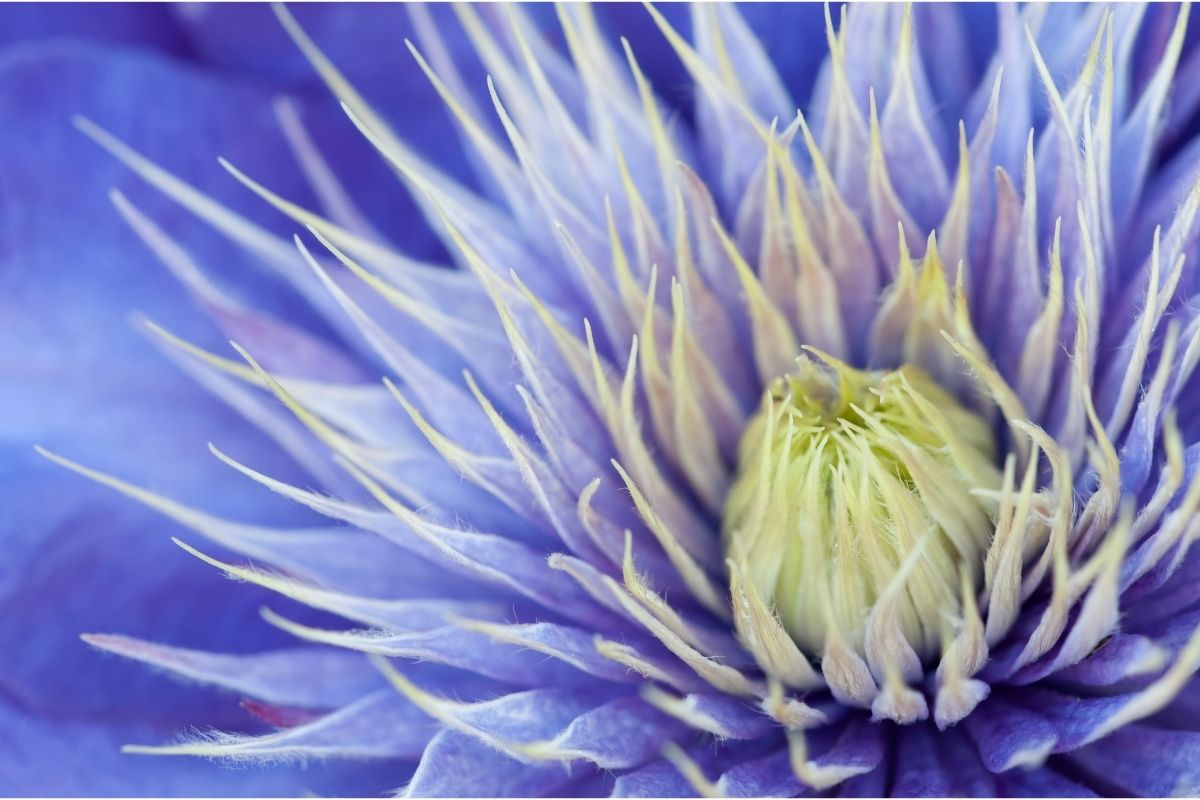
Blue Dancer Clematis is a beautiful flowering vine with short, bright green leaves and blue flowers, although a very faded or light purple is also a common color that appears on this variety.
This annual vine grows 6 to 10 feet tall, depending on the amount of care it is given and produces many blooms each season. The flowers last about 4 weeks. Blue Dancer Clematis prefers full sun and well-drained soil.
This clematis is ideal for spring bedding or hanging baskets. It does require regular trimming to maintain its shape.
Some people find that the foliage is toxic to cats and dogs, so caution should always be used when growing this variety indoors.
Conclusion
These are just some of the species and types of clematises you can find out there. There are hundreds more. But we hope we have helped show you just how beautiful and varied these flowers can be!
We Hope You Learned Something From This Article, Here Are Other Articles That You Can Learn From:
Best Sod Types For A Beautiful Green Lawn | A Comprehensive Guide
10 Different Types Of Indian Trees
Lawn Sprinkler Types | How To Choose The Best Sprinkler For Your Lawn!







